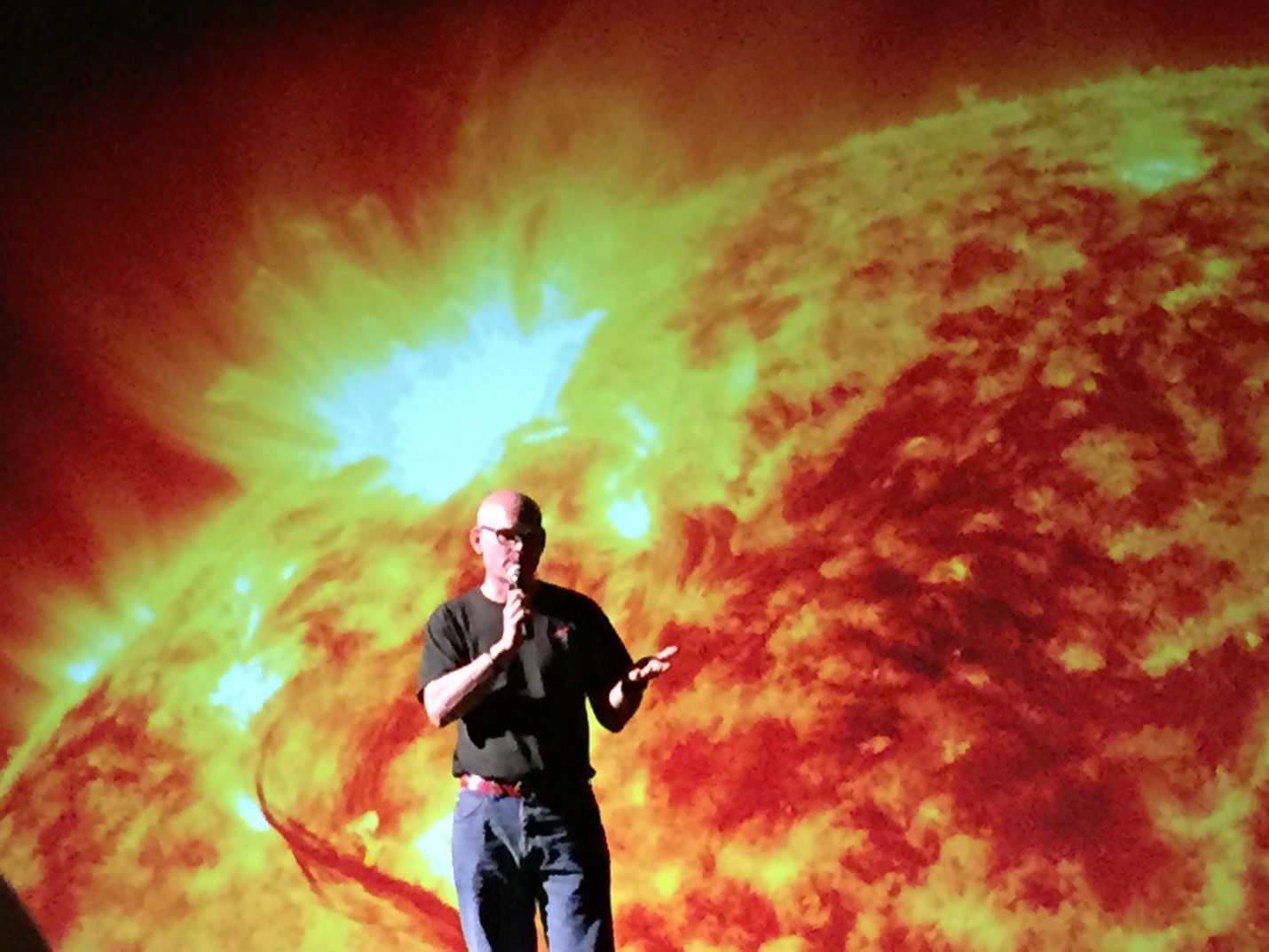This year’s World Science Festival in New York City highlighted several projects from NASA’s Goddard Space Flight Center, including a dramatic new digital art installation that zooms in on vistas of the sun’s dancing surface.
Currently on permanent display at Goddard’s visitor center, “Solarium” combines science and art to introduce people to the sun in a way they may never have seen before, fitting in with the festival’s mission of bringing science to the public. People who have long thought of the sun as an unchanging point of light may be surprised to see its boiling surface, loops, flares and ejections.
During the festival in May, the exhibit was shared at the Kimmel Center on the campus of New York University by Genna Duberstein, lead producer of “Solarium,” and Alex Young, associate director for science in Goddard’s heliophysics science division.
“People often don’t recognize that it is the sun,” said Duberstein.
The impressive imagery was also of interest to some teachers at the festival. “Some teachers talked to me about how they were interested in science, technology, engineering, arts and mathematics – or STEAM – education,” Duberstein added. “They were really interested in how ‘Solarium’ fits into that.”
Young gave several talks with “Solarium” as a backdrop. “One of my talks was the last talk of the day, and it was packed,” Young said. “Usually in that time slot, there aren’t many people.”
Audience members asked him questions for almost an hour. “Often the younger audience members ask the best questions, because they’re not self-conscious about asking something too basic,” he added. “Sometimes the simple-seeming questions are the most challenging to answer, because we just take those things for granted.”
“Solarium” is the brainchild of Duberstein, Video Producer Scott Wiessinger and Data Visualizer Tom Bridgman. Using imagery from NASA’s Solar Dynamics Observatory, Goddard producers created the time-lapse, immersive footage that pulls viewers right into the heart of the sun when they view “Solarium.” One minute of footage is the result of roughly 10 hours’ worth of work.
The exhibit has been installed in several venues and is site-specific, meaning it can be adapted for a variety of spaces. It has been presented on flat walls, curved walls and even on a bent wall, like at the visitor center.
“Solarium” isn’t just imagery, though. Accompanying the looping footage is a soundtrack also based on solar data. Alexander Kosovichev, a solar scientist at Stanford University, used Doppler data from the sun to create a deep, thrumming soundtrack to accompany “Solarium.”
The exhibit will be installed later this year at museums in Virginia and Louisiana.
Sarah Frazier
NASA’s Goddard Space Flight Center, Greenbelt, Md.
























